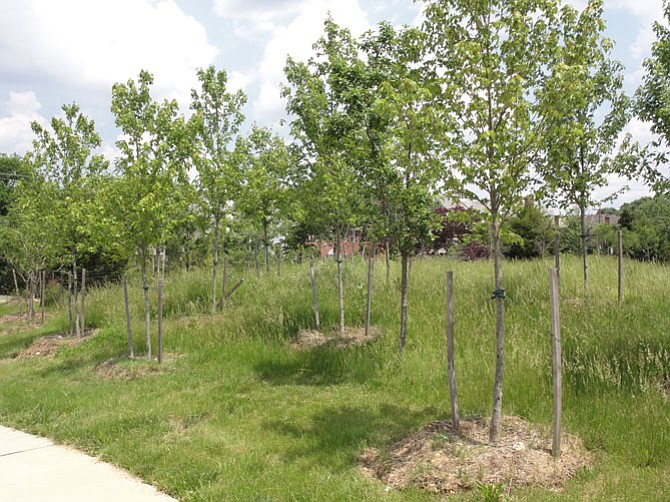To the Editor:
There has been much new construction around the city in the past few years. Whenever a new project is built, it usually involves installation of new trees in the landscape. No doubt, most people appreciate the value of well-situated shade trees and smaller ornamental trees. But over the past few years, I have noticed that the tree installations on newly-completed construction sites are often grossly ill-suited for the sites.
If one is installing shade trees that can grow up to 70 or 80 feet in height and width, what would be a reasonable distance between them? You might think at least 40 feet apart. Whoever is designing and approving these plans doesn’t think that.
At T.C. Williams High School around the parking lot and tennis courts, red maples (mature size: 50 feet to 60 feet high and wide) are installed in groups of four to eight, sometimes mixed with other large shade tree species, and some are as little as nine feet apart.
At the new pocket park on the corner of Pendleton and Henry streets, there are small Sweetgum trees (mature size: 60 feet to 75 feet high and wide) planted 14 feet apart in a group of three. There is also a row of Tulip Poplar trees (mature size 70 feet to 90 feet high by 50 feet wide) planted 17 feet apart with one being less than 20 feet from utility lines.
At Jefferson-Houston school, which was completed a couple of years ago, a row of shade trees was planted in the space between the sidewalk and the curb and directly under, and now nearly touching, utility lines that
are about 20 feet off the ground.
I can cite more instances of ill-conceived tree installations in the city, mainly on city property, but these three illustrate my point that the city is creating a problem that the taxpayers of Alexandria will pay for. Poorly sited tree installations such as those noted above will be dangerous in storms, require extraordinary maintenance and/or removal, and leave the city with butchered trees and large maintenance contracts.
They are like an annuity for the tree trimming companies.
The City of Alexandria has a city arborist and staff. One would think that unsuitable tree-planting plans for private development sites, but especially for city-owned sites, would be reviewed and rejected. That is, obviously, not the case.
Kevin Sherlock
Alexandria
